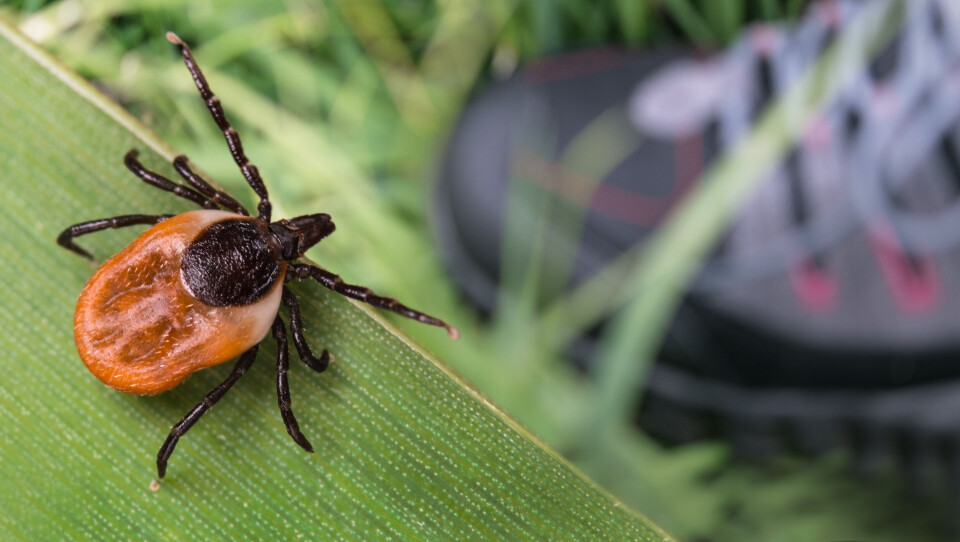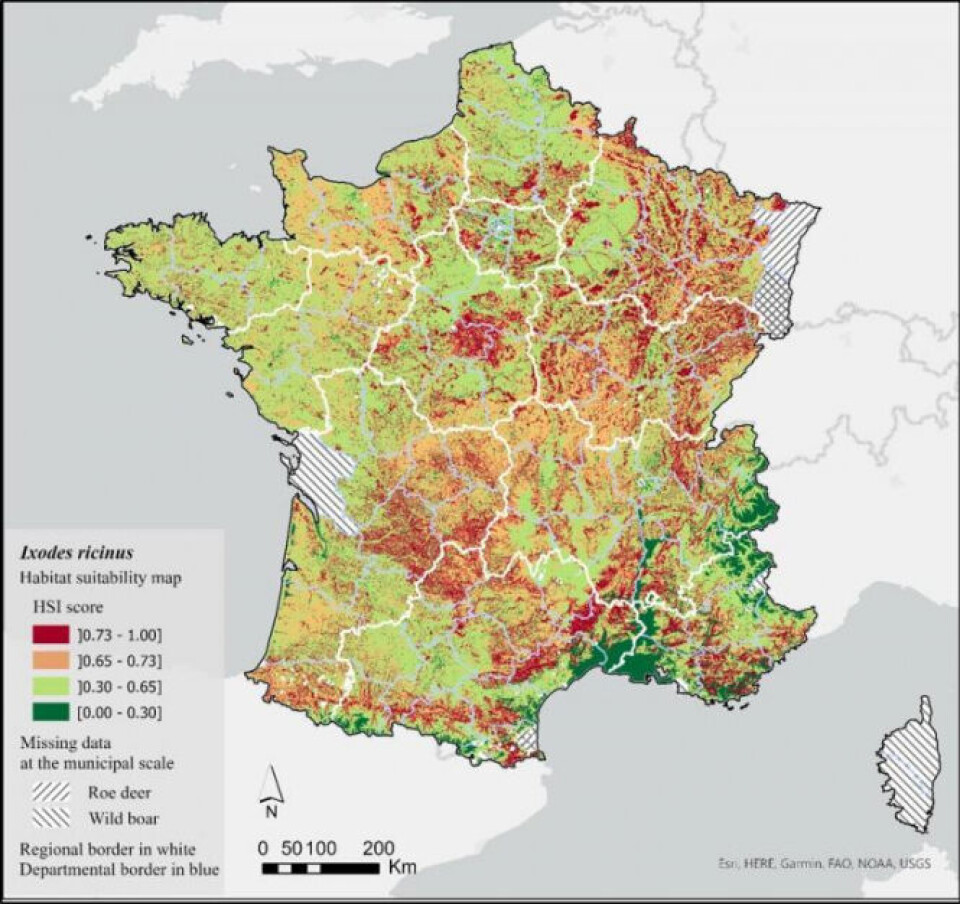-
‘No evidence third party involved’ in deaths of British couple in south-west France
Investigators update The Connexion on Dawn Kerr and Andrew Searle case
-
MPs push to remove low emission zones in France
Critics say the zones penalise lower-income households, but the government has warned abolishing them could cost billions
-
Trump tariffs: Americans in France hit by dollar drop
Europe has said the tariffs will cause the economy to ‘massively suffer’ as France plans retaliation
MAP: See the areas of France that suffer most from ticks
Researchers have compiled data to work out where ticks are most likely to be in a bid to raise awareness of Lyme disease

Researchers have created a new map to help estimate the risk of tick bites in different areas of France in a bid to prevent bites and raise awareness of tick-borne illnesses such as Lyme disease.
The map has been put together by national agriculture institute INRAE and VetAgro Sup, together with food and environmental agency Anses, Boehringer Ingelheim, and agriculture research organisation CIRAD.
The group analysed the risk associated with the Ixodes ricinus tick, the main vector of pathogens in France and Europe.
They used data collected across seven observational studies in different climates in mainland France, as well as meteorological data and environmental data (vegetation, soil, etc.).

MAP: Inrae.fr / Geospatial Health Vol.17 n°1
Their results, published in the scientific journals Geospatial Health and Scientific Reports, have enabled the group to develop both a map indicating the most common areas for the presence and activity of the ticks, and a model to predict the riskiest times according to the seasons and the weather.
The Ixodes ricinus tick is present across most of France. It is the main carrier of illnesses such as Lyme disease.
Its activity and life cycle depend on many factors including climate, altitude, land use, and the presence of humans.
The team has measured each of these factors depending on the area and come up with a “score” for each. It is this score that is shown on the map, in different colours.
The most common habitats for the tick are in red, followed by orange, then lime green. The areas in dark green are the least common.
The most common areas for ticks are in the centre, northeast and southwest, while the least common habitats are in the Mediterranean and high mountain regions.
This map provides information for regions and communes and is intended to help better target prevention messages on tick bites.
Tick and Lyme spread
A third of people in France have been bitten by a tick and this figure is rising, despite increased awareness campaigns on the dangers of Lyme disease (around 15% of ticks in France carry Lyme).
The French Health Ministry has issued campaigns to raise awareness of tick bites and Lyme disease since 2016.
Read more:Be aware: tick bites can cause Lyme disease, says survivor
In February, health body Santé publique France noted that there has been a rise in the number of reports of Lyme over the past few years, which is partly linked to increased awareness of the population, it said.
An estimated 15% of ticks in France are carriers of Lyme disease; with the majority of cases recorded in Grand Est, Bourgogne-Franche-Comté, Auvergne Rhône-Alpes and Nouvelle Aquitaine.
There were 50,133 new cases of Lyme disease reported in mainland France in 2019, figures from research programme CiTIQUE show. CiTIQUE is an initiative founded in 2017 as part of the national plan against Lyme disease.
How can I avoid tick bites?
Advice includes:
-
Use an anti-tick spray
-
Wear long, light-coloured clothing to cover excess skin and allow you to see ticks if they appear
-
Make sure children wear hats, especially if they are playing in grass or have their head near tall bushes and grasses
-
When you return from outside, wash your clothes at 60C, or tumble dry them for at least an hour, as ticks do not like dry heat
-
Carefully check your skin, especially in folds of skin or private areas, to check there are no ticks
-
Check the fur or skin of pets too, as they can become tick ‘hosts’ and bring them indoors
Read more: How to avoid Lyme disease-carrying ticks this summer
What if I think I have been bitten?
If you do suspect or know you have been bitten, you are advised to:
-
Pull the tick ‘head’ out with tweezers, taking care to remove it in one quick movement, without crushing its body or head
-
Check the tick bite area of your skin and stay alert to your general health and any symptoms over the next month; tick bites that cause Lyme can often lead to a ‘bull’s eye’ red ring around the bite
-
Ask a health professional to remove the tick as soon as possible if you are not able to remove it yourself
-
Request preventative antibiotic treatment against Lyme disease within the next 24-48 hours, from your nearest doctor or health professional, to avoid developing the disease long-term.
Related articles
More risk of Lyme disease from ticks in east France than in Brittany
Where in France you are most at-risk from Lyme disease ticks
Lyme disease: Number of people bitten by a tick rising in France
























